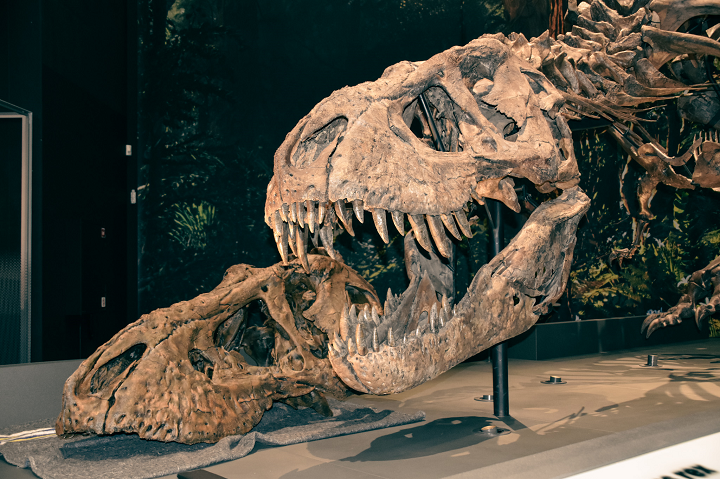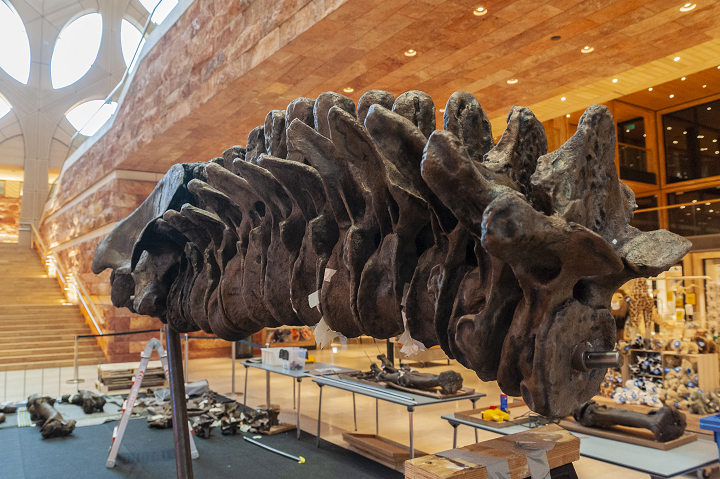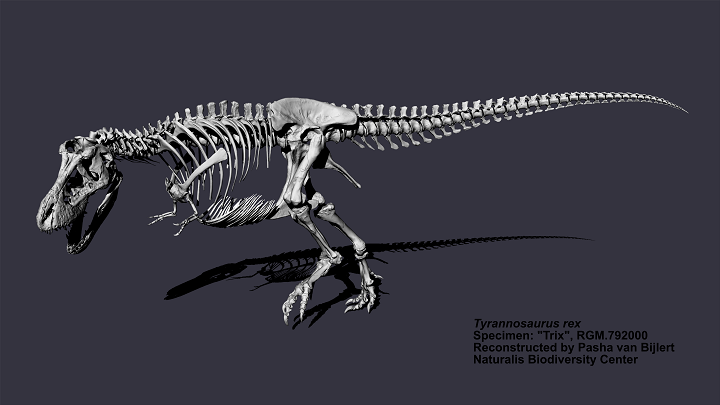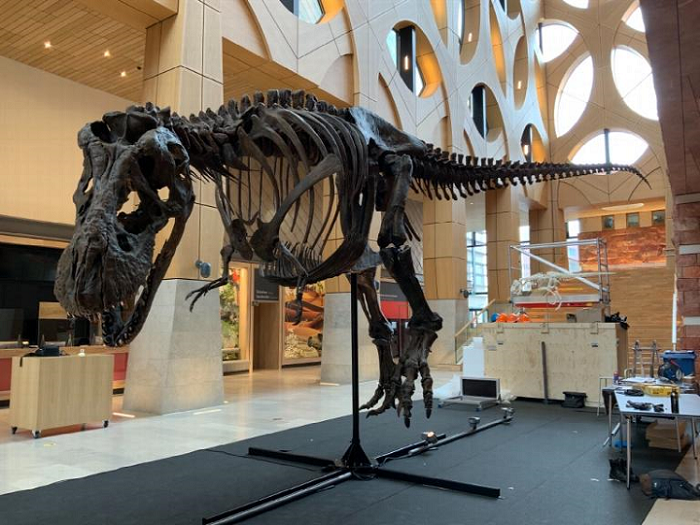3D scanning and 3D printing technologies have been used many times in the past to learn more about the diverse group of reptiles we call dinosaurs that walked the earth millions of years ago, as well as properly showcase them to the public.
In 2013, a Tyrannosaurus rex skeleton in great condition and missing only the left leg, skeletal feet, and arm bones, was found on a dig in Montana via the Dutch Naturalis Biodiversity Center, a natural history museum, academic research center, and heritage institution. In order to recreate these missing bones for a full display skeleton, 3D scanning and printing were deployed to make “Trix” whole and ready for display in the Netherlands. Now, a 3D printed reconstruction of Trix will soon be heading to Japan.
Over the last several years, the museum in Leiden has been working to take 3D scans of every single bone in Trix’s skeleton, and luckily, they had a lot with which to work.
Anne Schulp, Professor of Vertebrate Palaeontology and dinosaur expert at Naturalis, said, “Because the fossil was preserved in a thick layer of sand, the bones have not been distorted, so we have a perfectly fitting skeleton, which can be seen especially well in the tail vertebrae.”
Up until last year, no copies had been made of Trix, but Naturalis recently finished its end of an agreement with the soon-to-open Japanese Dinosaur Museum in Nagasaki—one of the cities twinned with Leiden—to create a special, life-sized replica of the T-rex skeleton.
Naturalis 3D modeler and anatomist Pasha van Bijlert used the 3D scans to create a digital 3D reconstruction of Trix, missing bones and all, and the 41-foot-tall design was printed on Naturalis’ Builder 3D Extreme 1500 Printers, out of PLA, in 2020. Then, Naturalis employees partnered with the Leiden School for Instrument Makers (LIS) to set the prints up in a kit so the 660 lb. skeleton is easier to assemble. So instead of hundreds of smaller parts, the T-rex replica consists of 50 larger 3D printed parts.
As a dry run, the 3D printed replica of Trix was first assembled and displayed in the Naturalis entrance hall in late 2020. Unfortunately, due to the COVID-19 pandemic, the museum was closed for almost the entire construction period, so hardly any visitors got to see the process. Additionally, Naturalis will now have to assist in the construction process with the Dinosaur Museum via online meetings, instead of in-person.
Project leader Hanneke Jacobs said, “We were planning to travel to Japan together with the replica and help put it together there, but the travel restrictions due to the coronavirus make the journey impossible.
“We built the replica in our atrium because we wanted to share the process with as many visitors as possible, so it’s kind of sad that we had to close.”
Some interesting changes were made to the 3D printed T-rex skeleton that set it apart from the original skeleton. First, 3D Trix is standing in an attack pose, with its head held higher up in the air; it would not have been advisable to do this with the real skeleton.
“One of the reasons the head of our real Trix is so close to the ground is because we wanted to show its wonderful skull,” Van Bijlert explained. “Moreover, the skull is very heavy and valuable, so it’s not something you want to position five meters above the ground.”
3D Trix also has its knees positioned closer together, which is more accurate, and it also features a more true to life spinal column…thanks, once again, to 3D printing.
“The real Trix is mounted so that each bone can be removed individually from the frame for research. This means that the vertebrae of the back, neck and tail are further apart than when the animal was alive,” Van Bijlert said. “In the new reconstruction, I’ve been able to change this because the bones can all stay in place.”
While the original Trix skeleton will remain in Holland, the 3D printed replica will be shipped out to Nagasaki next week. The new Dinosaur Museum won’t open until October of 2021, so employees will have plenty of time to set 3D Trix up on a metal frame, which will actually go through the plastic bones to give visitors a better look.
“Of course, we don’t drill holes in bones that are over 66 million years old. But you can do it with the print,” Jacobs said.
(Source/Images: Naturalis Biodiversity Center)
Subscribe to Our Email Newsletter
Stay up-to-date on all the latest news from the 3D printing industry and receive information and offers from third party vendors.
Print Services
Upload your 3D Models and get them printed quickly and efficiently.
You May Also Like
Consolidation in AM: How 2025 Is Shaping the Industry’s New Normal
The first half of 2025 has been marked by a clear shift in the additive manufacturing (AM) industry. Companies are no longer just focused on developing new tech by themselves....
Etsy Design Rule Change Reduces Selection of 3D Printed Goods
Online marketplace Etsy has implemented a rule change requiring all 3D printed goods on the site to be original designs. The update to the site’s Creativity Standards states, ¨Items produced using...
U.S. Congress Calls Out 3D Printing in Proposal for Commercial Reserve Manufacturing Network
Last week, the U.S. House of Representatives’ Appropriations Committee moved the FY 2026 defense bill forward to the House floor. Included in the legislation is a $131 million proposal for...
Transforming From Tourist to Native: Duro CEO Michael Corr Explains Why the Company Rebuilt its PLM Software on AI
In these early innings of the AI boom, many market analysts have expressed concern that AI spend has gotten too far ahead of the technology’s proven ability to deliver significant...





































